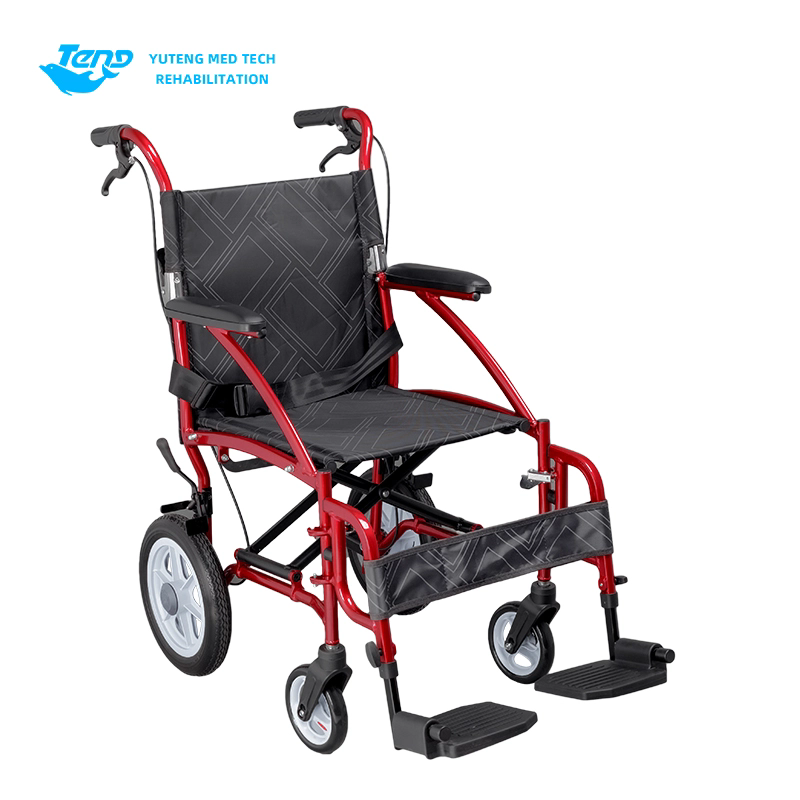The Manual Wheelchair: A Lifeline for Independence
2025-02-06
For individuals with mobility challenges, the manual wheelchair can be a vital tool, offering freedom and independence. While electric wheelchairs and other mobility aids are popular, the manual wheelchair remains a go-to choice for many. This simple yet effective device can make a significant difference in the daily lives of people with physical disabilities, giving them greater control over their environment and personal movement.
What is a Manual Wheelchair?
A manual wheelchair is a mobility device powered by the user or a caregiver. Unlike electric wheelchairs, which rely on motors, manual wheelchairs require physical effort to propel. They come in a variety of designs, from lightweight models for easy transport to more robust ones designed for comfort and durability.
Typically, a manual wheelchair consists of a frame with large rear wheels and smaller front casters. The user propels the wheelchair by pushing the large rear wheels or may rely on a caregiver to push from behind. The simplicity of its design makes it easy to use, adjust, and maintain.
Advantages of Manual Wheelchairs
1. Cost-Effective: One of the biggest advantages of manual wheelchairs is their affordability. They are typically much less expensive than electric wheelchairs, making them accessible to a wider range of individuals.
2. Exercise and Health Benefits: Using a manual wheelchair provides upper body exercise, especially for the arms, shoulders, and back. This can help improve muscle tone and overall fitness, which is essential for maintaining health.
3. Portability: Manual wheelchairs are lighter and easier to fold than their electric counterparts, making them ideal for travel and storage. Whether you are hopping in the car or heading out on a plane, a manual wheelchair is easy to take along.
4. Simplicity and Maintenance: With fewer parts and no reliance on electrical components, manual wheelchairs are relatively simple to maintain. Most users can perform basic maintenance, such as inflating tires and cleaning, without the need for professional assistance.
5. Better Control: For individuals who have good upper body strength, a manual wheelchair offers more control over movement. The user can easily navigate tight spaces, adjust their speed, and turn more quickly compared to an electric wheelchair.
Considerations When Choosing a Manual Wheelchair
While manual wheelchairs offer numerous benefits, it is important to select one that suits the user’s needs. Some factors to consider include:
Weight: Lighter models are easier to maneuver and transport, but they may sacrifice some comfort or durability. Heavier models, while more stable, may be harder to push and lift.
Seat Size and Comfort: Wheelchair users spend a significant amount of time seated, so comfort is a major factor. Choosing a chair with proper seat padding and adjustable footrests is essential for long-term comfort.
Wheels and Tires: The type of tires (solid or pneumatic) can impact the wheelchair’s performance. Pneumatic tires provide a smoother ride, but they are prone to punctures. Solid tires are durable but may offer a rougher ride.
Customization: Many manufacturers offer customizations such as adjustable armrests, seat height, and backrests. It’s crucial to choose a wheelchair that can be adapted to the user’s specific needs.
Conclusion
The manual wheelchair remains an indispensable tool for many individuals with mobility challenges. It offers a perfect balance of freedom, portability, and exercise. With its low cost and ease of use, it is no wonder that manual wheelchairs continue to be a popular choice for those seeking independence in their daily lives. By understanding the different types and considering the user's specific needs, a manual wheelchair can enhance the quality of life and provide greater autonomy for many individuals.



